Zeravshan campaign 1868 g (From the history of the conquest of Turkestan)
V.V. Vereshchagin. "Are off guard"
After the unsuccessful Crimean War 1853-1856. The Russian government was forced to temporarily change the vector of its foreign policy from Western (Europe) and South-Western (Balkans) to Eastern and South-Eastern. The latter seemed very promising both in terms of economic (acquiring new sources of raw materials and industrial markets) and geopolitical (expanding the limits of the empire, weakening Turkish influence in Central Asia and occupying positions threatening British possessions in India).
The solution to the task of moving to Central Asia seemed very simple. By the middle of the XIX century. most of the Kazakh steppe was under Russian control; the local sedentary population was economically burdened by Russia; The Central Asian state formations (the Emirate of Bukhara, the Kokand and Khiva khanates), torn by internal political contradictions, could not offer serious resistance. The main "opponents" of the Russian troops were considered long distances, lack of roads (it is difficult to supply food and ammunition, keep in touch) and a dry climate.
The fighting against the Highlanders in the Caucasus and the Polish uprising 1863-1864. delayed the beginning of the campaign in Central Asia. Only in the second half of May, 1864, the detachments of Colonels N.A. Verevkina and M.G. Chernyaeva moved from the Syr-Darya fortified line and from Semirechye in the general direction to Tashkent (the largest city of the region, whose population exceeded 100 thousand people.
Speaking of 22 in May of 1864 from Fort Perovsky, Verevkin’s small detachment (5 infantry companies, 2 hundreds of Cossacks, hundreds of Kazakh policemen, 10 artillery guns and 6 mortars), following up p. Syr-Darya, in two weeks reached the city belonging to the Kokand Khanate and the fortress of Turkestan. Beck (ruler) rejected the demand for surrender, but, not hoping for success in defense, soon left the city to the mercy of fate. And then the unexpected happened: the inhabitants of Turkestan put up stubborn resistance to the Russian troops. The fighting went on for three days, and only 12 June the fortress was taken. For this victory N.A. Verevkina was promoted to major generals and awarded the Order of St. George 4 degree. However, Verevkin did not dare to go with his small detachment to densely populated Tashkent, enclosed by an 20-kilometer fortress wall, and took up the consolidation of power in the conquered territories.
Having a larger detachment (8,5 mouth, 1,5 hundreds of Cossacks, 12 guns (total 1,5 thousand regular troops and 400 people of the Kazakh militia) MG Chernyaev occupied 4 June 1864 of the city of Aulie-Ata (a fortification located on the left bank of the river) Talas on the road from Verny to Tashkent. On September 27, he captured the large city of Chimkent and attacked Tashkent on the move.However, the siege and assault on 2-4 in October of the main Central Asian city ended in failure and October 7 Chernyaev returned to Chimkent.
Tashkent failure somewhat cooled "hotheads" in St. Petersburg. Nevertheless, the results of the 1864 campaign were considered successful for Russia. At the beginning of 1865, it was decided to increase the number of Russian troops in Central Asia and form the Turkestan region in the conquered territories. The head of the region was instructed to separate Tashkent from the Kokand Khanate and form special ownership there under the Russian protectorate. M.G. had to perform this task. Chernyaev, produced for his success as a major general and appointed by the Turkestan military governor.
At the end of May, the 1865 of Chernyayev with a detachment of infantry in the 9,5 at 12 guns again moved to Tashkent and on June 7 took up a position 8 versts from the city. Kokand Khan sent to the rescue the besieged 6-thousandth army with 40 guns. On June 9, there was a head-on battle near the walls of the city, in which the Kokand, despite their numerical superiority, suffered a complete defeat, and their leader Alimkula was mortally wounded. Terrified Tashkent residents asked for help from the emir of Bukhara. 10 June a small detachment of Bukharan troops entered the city. Having no time and effort to blockade or a long siege, Chernyaev decided to take Tashkent by attack. Artillery guns breached the wall and 14 Jun 1865 as a result of a decisive assault on the city fell. On June 17, honorary residents of Tashkent came to the newly-minted military governor with an expression of resignation and readiness to accept Russian citizenship.
“Apotheosis of War” 1871 year. V.V. Vereshchagin.
Russia's military and political presence in the Turkestan region was growing. But her opponents in the person of the local feudal clerical circles and their foreign patrons did not give up either. Simple dekhane and herdsmen, too, were still reserved to foreigners. Some saw them as invaders, so the propaganda of the “Gazavat” (holy war against the “infidels”, non-Muslims) had a certain success among the people. At the beginning of 1866, the Bukhara emir Seid Muzaffar, enlisting the support of the Kokand ruler Khudoyar Khan, whom he helped seize the throne, demanded that Russia clean Tashkent (the capital of Turkestan. Negotiations between the parties resulted in nothing again on the Russian side. 8 in May 1866. The Bukhara army suffered a cruel defeat at the Irdzhar tract. In May, the “hot pursuit” detachment of Major General DI Romanovsky (24 mouth, 14 hundreds of Cossacks, 5 guns and 20 rocket launchers) takes by storm located The heavily fortified city of Khojent (a junction of roads to Tashkent, Kokand, Balkh, and Bukhara) on the banks of the Syr-Darya River. As a result of the offensive launched by the Russian troops in the autumn of 8 in the fall, two more powerful Bukhara fortresses fell: October 1866 (Jizzakh. Jizzakh and Khojent districts were annexed to Russia. (2)
Conquered in 1864-1866's. the territories constituted the Syr-Darya region, which, together with Semirechenskaya, in 1867, was merged into the Turkestan General Governorship. The first governor-general of the region was an experienced politician and administrator engineer-general K.P. Kaufman M.G. Chernyaev with his adventurous manners, in the opinion of the Russian "upper", was not suitable for this position.
The reasons for the successful actions of the Russian troops against numerous forces of the Central Asian rulers were revealed in their memoirs by the former military minister A.N. Kuropatkin, a young second lieutenant after graduating from the Pavlovsk School, arrived in the autumn of 1866 for service in Turkestan: "Their superiority (Russian troops (IK) consisted not only in the best weapons and training, but mainly in spiritual superiority. Bound by discipline and the awareness of belonging to a glorious Russian tribe, our soldiers and officers marched on the enemy, not counting him, and success proved that they were right.The glorious feats of Chernyayev and other people, together with a sense of superiority over the enemy, developed in the troops a determination to seek victories not in defense but in attack ... "(2)
Vasily Vasilyevich Vereshchagin (1842-1904) "Wounded Soldier"
The specifics of the hostilities in Central Asia required the development of a kind of tactics that were not provided for by the army regulations. "According to the same local conditions (wrote A.N. Kuropatkin, (it was necessary to keep always when acting against the enemy, both defensive and offensive, assembled, ready to repel the enemy from all sides. Therefore, at every position for the night, a square was formed providing troops from all four sides ... Measures were taken to avoid movement in the rear of single people and small teams. We tried to have our "base" with us ... (3)
The main burden of the Central Asian campaigns fell on the shoulders of the infantry. "She decided the fate of the battle, (Kuropatkin testified, (and after the victory, she was entrusted with the main work to create a new Russian stronghold. The infantry built fortifications, temporary barracks and storage rooms, conducted roads, escorted transports. Conquest of Central Asia was mainly a matter of Russian infantry. On her share fell and the main losses of the dead and wounded ...
Our cavalry, consisting of Cossacks, was small ... That is why, when meeting with superior forces, our Cossacks retreated, or, dismounting, met the enemy with rifle fire and waited for revenue ... "(4) The Cossacks were also used for reconnaissance and post The Kazakh police, who also served as guides, provided great assistance in this matter.
The aim of the hostilities was to occupy strategically important settlements, most of which were greatly strengthened. "Having approached with accelerated siege work on the moat of the fortress, they began an assault, most often before dawn. The companies assigned to the assault gathered secretly against the chosen point ... with their own ladders and on a signal ... they got out of the trenches, pulled out the ladders and with them ran to the wall of the fortress ... It was necessary to reach the ditch, pull the thick end of the ladder into the ditch, swing the ladder and transfer it to the wall with a thin end. Then you had to go down into the ditch and, climbing these ladders, try to master a section of the enemy wall. while the shooters remained scattered around the counter-escarpment to attack the enemy ... There were several ladders at once, and our heroes, challenging each other’s place, climbed the stairs while the enemy was taking their measures against them. logs, pieces from the wall, poured boiling water, tar, struck with rifle fire, and on the top of the wall they were met with batiks, spears, and checkers. The picture of such a battle tolerated the viewer by the Middle Ages ", (A.N. Kuropatkin. (5)
Vasily Vasilyevich Vereshchagin (1842-1904) "Triumph - the final version"
And what about artillery? (Of course, Russian cannons were more sophisticated and stronger than enemy ones, especially on the battlefield. But "the artillery preparation of that time could not make big gaps in the thick Asian walls," although knocking down the upper part of the fortifications, "made it extremely easy to storm the stairs." (6)
1867 year passed relatively quietly, except for two collisions of the Jizzakh detachment, Colonel A.K. Abramova with Bukharians 7 June and in early July near the fortifications of Yana-Kurgan, on the road from Jizzak to Samarkand. Both sides were preparing for a decisive battle. By the spring of 1868, the Russian troops in Turkestan numbered 11 battalions, 21 hundred Orenburg and Ural Cossack troops, a sapper company and 177 artillery guns (there were about 250 officers and 10,5 thousand soldiers, non-commissioned officers and Cossacks in total. Permanent army of 16N officers, 12 and non-commissioned officers and Cossacks. In total, the army of non-commissioned officers, and 20 thousands of soldiers, non-commissioned officers and Cossacks. In total, there was a permanent army of 98 from 30 battalions, from 150 to 15 hundreds of cavalry and XNUMX guns, (about XNUMX thousand people in total. In addition to regular troops, numerous militia from armed residents gathered in wartime.
At the beginning of April, 1868, the emir Seid Muzaffar, proclaimed “ghazavat” against the Russians. In case of success, he counted on the help of the Turkish sultan, the rulers of Kashgaria, Kokand, Afghanistan, Khiva and the administration of British India. However, the anti-Russian coalition immediately began to fall apart. Central Asian rulers took a wait. A detachment of Afghan mercenaries Iskander-Ahmet Khan, not having received a salary by the deadline, left the fortress Nurat and went over to the side of the Russians.
Russian troops, numbering about 3,5. Thousands of people by April 27 concentrated in Yana-Kurgan. The commander of the detachment was Major General N.N. Golovachev, but the general leadership of military operations was assumed by the Commander of the Turkestan Military District, Governor-General KP. Kaufman April 30 squad made on the Samarkand road and, spending the night in the tract Tash-Kupryuk, 1 May moved to r. Zeravshanu. On the approach to the river, the Russian avant-garde was attacked by the Bukhara cavalry, but the head of the cavalry, Lieutenant Colonel N.K. Strandman with 4 hundreds of Cossacks, 4 equestrian guns and rocket battery managed to push the enemy to the left bank.
Vasily Vasilyevich Vereshchagin (1842-1904) "Look out"
The Bukhara troops occupied favorable positions on the heights of Chapan-ata. All three roads leading to Samarkand, as well as the crossing of Zeravshan, were fired upon by enemy artillery. Having built a detachment in battle order, Kaufman ordered to attack the heights. In the first line, six companies of the 5 and 9 of the Turkestan battalions with 8 cannons were deployed. On the right flank there were five companies of the 3 line and 4 rifle battalions and a company of Afghans, and on the left (three companies of the 4 battalion and half battalion sapper. 4 hundreds of Cossacks with 4 equestrian guns and rocket battery were in reserve. (quads of fortified wagons (IK) under the protection of four mouths of the 6 Line Battalion, 4 guns and fifty Cossacks. Passing through the chest in water Zeravshan sleeves and then knee-deep in mud muddy rice fields, under cross-gun and artillery fire Bukhara Russians began to catch It was mainly infantry, since artillery and cavalry did not manage to cross the river. The onslaught was so swift that sarbazes (soldiers of the regular army of Bukhara (IK) fled, throwing a 21 gun. Loss of Russian troops amounted to all 2 killed and 38 wounded.
The next day Samarkand was supposed to be stormed, but at dawn, KP Representatives of the Muslim clergy and administration came to Kaufman with a request to take the city under their patronage and then "into the citizenship of the White Tsar." The governor-general agreed, and the Russian troops occupied Samarkand. Kaufman sent Seyid Muzaffaru a letter, offering the world on terms of concessions to Samarkand’s Bekism, paying “military expenses” and recognizing Russia of all acquisitions made in Turkestan with 1865. There was no response to the letter ...
Meanwhile, all the cities of the Samarkand town, with the exception of Chilek and Urgut, sent delegations with an expression of resignation. May 6 Chilek was occupied by a detachment (6 mouth, 2 hundreds, 2 guns and the missile battalion) Major FK without a fight. The stamp, which, having destroyed the fortifications and barracks of the Sarbaz, returned to Samarkand the next day. With the same forces, Colonel AK was sent against Urgut, who threatened the flank of the Russian troops while moving to Bukhara, with the same forces. Abramov The ruler of the city of Gusein Bey, wanting to gain time, entered into negotiations, but folded weapon refused. The 12 May detachment of Abramov, breaking the stubborn resistance of the Bukharians in the rubble and the citadel, with the support of artillery, captured Urgut. The enemy fled, leaving the 300 corpses in place. Russian losses amounted to 1 people. killed and 23 wounded.
16 in May most of the Russian forces (13,5 mouth, 3 hundreds and 12 guns) under the command of Major General N.N. Golovacheva moved to Katta-Kurgan and 18 in May freely occupied him. Bukharians retreated to Kermine. The remaining 11 infantry companies in Samarkand, artillery and rocket battery teams, 2, hundreds of Cossacks engaged in strengthening the city citadel. Precaution was not superfluous, because in the rear of the Russian troops, partisan detachments from the local population were activated. On May 15, one of these units, led by former Chilek Bek Abdul-Gafar, headed for Tash-Kupryuk to cut off the Russians from Yana-Kurgan. Sent to the threatened item Lt. Col. N.N. Nazarov, with two companies, hundreds of Cossacks and two rocket launchers, forced Abdul-Gafar to retreat through Urgut to Shakhrisyabz (mountainous area 70 km. South of Samarkand. From 23 in May from Shahrisabza, in a gorge near the village of Kara-Tube, large forces of the militia began to accumulate. 27 in May was opposed by AK Abramov with 8 mouths, 3 hundreds and 6 guns. The infantry occupied Kara.Tyube, but the Cossacks were surrounded by superior forces of the Shahrisyabians. If it were not for the help of two mouths of soldiers, would have had to be tight .... The next day, Abramov was forced to return to C Amarkand. On the way, he discovered that cavalry units of insurgents had already appeared around the city ...
On May 29 in Samarkand a report was received from General N.N. Golovacheva, that on the Zerabulak Heights in 10 versts from Katta-Kurgan, a camp of Bukharan troops numbering up to 30 thousand people appeared. In Chilek, militia concentrated to attack Yany-Kurgan, where there were only two infantry companies, two hundred Cossacks and two mountain guns. The detachments of Shahrisyabians concentrated in Kara-Tyube to attack Samarkand. According to the plan developed by the vassal emir of the Bukhara rulers of Shakhrisabz, it was planned for 1 June to simultaneously attack the Russian troops from three sides and destroy.
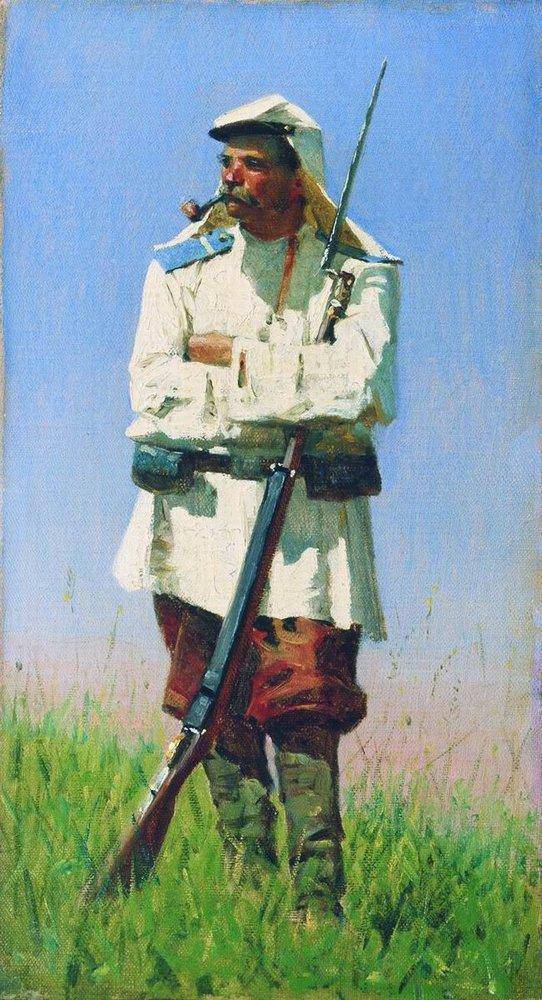
The situation was becoming critical. To turn the tide, K.P. Kaufman, leaving a small garrison in Samarkand (520 men of the 6 th Turkestan Linear Battalion, 95 sappers, 6 guns and 2 mortars), with the main forces of 30, rushed to Katta-Kurgan. The next day, having covered 65 versts in 24 hours, he joined up with a detachment of N.N. Golovacheva. 2 June Russian troops swiftly attacked the enemy on the Zerabulak Heights. The Bukhara army, half diluted by the militias, suffered a complete defeat. Only sarbaz tried to resist, but even they were scattered by artillery fire. “About 4 thousand corpses covered the battlefield, (AN Kuropatkin wrote. (All guns were taken. The regular army of the Emir ceased to exist and the road to Bukhara was opened ...” (7) Indeed, according to the scouts, with the emir , who fled to Kermin, there were only about 2 thousand people, including a small convoy, but even a few Russian troops, having suffered losses, needed rest and tidying up.
Meanwhile, the warrior mountaineers of Shakhrisabz, led by their rulers Jura Bek and Baba Bek, occupied Samarkand and, with the support of the rebellious citizens, laid siege to the citadel, where a small Russian garrison was hiding. This is how the following events cover the memoirs of “70 years of my life” by A.N. Kuropatkin: "2 June, at 4 hours of the morning .., huge crowds of mountaineers, residents of Samarkand and the Zeravshan valley with drumming, at the sound of pipes, shouting" Ur! Ur! "Flooded the streets and rushed to the storming of the citadel. Strong rifle fire opened up on the walls of the sakles and gardens of the citadel's defenders. One gun and large falconets (ancient howitzers - IK), which were pulled onto the roofs of the mosques of Samarkand, struck the entire interior the citadels beat the hospital and the courtyard of the Khan’s palace where our reserve stood. The attack was carried out simultaneously in seven places, especially the attackers' efforts were directed at mastering two gates and on some breaches near this gate.Our small garrison came axle hard. " (8) The commander of the citadel, Major Shtempel and Lieutenant Colonel Nazarov mobilized for the defense all non-combatants (clerks, musicians, quartermasters), as well as sick and wounded local hospital capable of holding a weapon. The first attack was repulsed, but the defenders suffered serious losses (85 people killed and wounded.
Vasily Vasilyevich Vereshchagin (1842-1904) "Soldiers near the fortress wall"
Having a more than twenty-fold advantage in numbers, the rebels continued to violently storm the fortress, seeking to do away with its defenders as soon as possible. They gave the floor again to the contemporary of events (AN Kuropatkin: "The attacks resumed at night, and the enemy lit the gate. The Samarkand gate was extinguished and an embrasure was built in them, through which the besieged beat on the attacking canister, but the Bukhara gate had to be destroyed, having built a blockage behind them , at which time the enemy broke into the breach of the Bukhara gates with quite large forces at 5 in the morning, but, met with hand grenades and a friendly blow at bayonets, the enemy's great forces at one o'clock in the morning Temporarily broke into the citadel from two sides: from the western at the food warehouse and from the east at the Samarkand gate. A hot fight ensued inside the citadel ... The general reserve arrived in time decided it in our favor. The enemy was overturned to the wall and dropped from it ... 10 hours of the day even the strongest danger threatened the defenders from the Bukhara gate. Crowds of fanatics went on a desperate attack on the curtain in front of the gate and on the wall on both sides. They climbed, clinging to the iron cats, dressed on his arms and legs, sitting down each other. The defenders of the dam, having lost half of their composition, were confused ... But, fortunately, the revenue was close. Nazarov, gathering and encouraging the defenders, stopping the retreating, backing them up with several dozens of weak (sick and wounded soldiers (IK) and Cossacks, who made up the private reserve of the site, rushed at this critical moment at the head of everyone in bayonets, overturned the enemy and, carried away succeeded, chased him through the city’s streets. At 11, the general assault repeated at all points repeated hours. The second day cost the brave 5 garrison people killed and wounded. For two days, the losses were 70%, the rest, two of which did not leave the walls days were si no tired ... "(25)
Witness of the bloody battles in Samarkand, the famous Russian battle painter V.V. Vereshchagin devoted a series of his paintings to these events. The rulers of Bukhara and Kokand were closely following the course of the Samarkand uprising. In case of his success, the first one expected to turn the course of the war with Russia in his favor, and the second (to repel the Tashkent from the Russians.
Not hoping, in view of their small size, to keep the entire perimeter of the walls of the citadel, the besieged began to prepare their last refuge for defense (the Khan's palace. At the same time, Major Shtempel ... sent the natives messengers to General Kaufman every night with a report on the plight of the garrison. A total of 20 people were sent, but only one reached Kaufman. The rest were intercepted and killed or changed. The messenger brought a brief note to Kaufman on a tiny piece of paper: “We are surrounded, the storms are continuous, the losses are big, we need help .. "The report was received on the evening of June 6 and the detachment came to the rescue immediately. Kaufman decided to go 70 versts in one transition, stopping only for halts ... 4, 5, 6 and 7 June every day several times repeated attacks on the gates and breaches in The walls didn’t fall silent, but our garrison, despite extreme exhaustion and significant new losses, not only fought off the enemy, but made forays into the city and burned it. At nights, as a result of exhaustion on both sides, a relative lull came as if by mutual agreement . 7 June in 11 hours of the evening saw the garrison of the citadel of Samarkand, with an indescribable sense of joy, rocket in the environs on the way to Katta-Kurgan. That came to the rescue of the heroes of Kaufman ... "(10)
The combined Uzbek-Tajik detachments, having left Samarkand, went to the mountains or scattered around the surrounding villages. 8 June in the city again entered the Russian troops. On June 10, a representative of the Emir of Bukhara arrived in Samarkand to conduct negotiations. 23 June 1868. A peace treaty was concluded, under which Bukhara recognized Russia for all its conquests with 1865, undertook to pay 500 thousand rubles. indemnities and give the Russian merchants the right of free trade in all cities of the emirate. Of the territories captured in 1868, the Zeravshansky district was formed with two departments: Samarkand and Katta-Kurgan. A.K. was appointed the head of the district and the head of the military-national administration. Abramov, produced in major generals. Leaving the infantry battalion 4, 5 hundreds of Cossacks, 3 artillery battalion and rocket battery, Governor General KP Kaufman with the rest of the troops moved to Tashkent.
The emirate of Bukhara was put into vassal dependence on Russia. When Seid Muzaffar Katta-Tyur's eldest son, unhappy with the terms of the 1868 agreement, raised a revolt against his father, Russian troops came to the emir’s rescue. 14 August 1870, detachment A.K. Abramov took Kitab by storm (the capital of the Shahrasyab beks, who had decided to secede from Bukhara. In 1873, the Khiva khanate fell under the protectorate of Russia.
The rulers of the vassal states of Central Asia dutifully followed in the wake of Russian policy. And no wonder! After all, the population subject to them did not strive for independence, but, on the contrary, to become part of the Russian Empire. Their brothers in the territory of Turkestan lived much better: without feudal strife, they could use the achievements of Russian industry, agricultural technology, culture, and qualified medical assistance. The construction of roads, especially the Orenburg-Tashkent railway, contributed to the rapid development of trade, drawing the Central Asian region into the all-Russian market.
The existence of formally independent enclaves on the territory of the Russian Empire suited the tsarist government. It served as one of the reasons for the loyalty of the population of Turkestan and allowed, if necessary, to resolve complex foreign policy conflicts. For example, in 90's. In the 19th century, in view of the aggravation of relations with England, part of the Pamir mountain khanates, for which Russia claimed, was transferred to the nominal administration of the Bukhara administration (11). After the conclusion of the Anglo-Russian agreement on the division of spheres of influence in 1907, this section of the Pamirs successfully entered the Russian Empire ...
1. Abaza V.K. The conquest of Turkestan. SPb., 1902; Terentiev M.A. History conquest of Central Asia. SPb., 1906.
2. RGVIA. F.165. Op.1. D.1741. L.34.
3. Ibid.
4. Ibid. L. 34-36.
5. Ibid. L. 37.
6. Ibid. L. 36.
7. Ibid. D.1742. L. 46.
8. Ibid. L. 51-52.
9. Ibid. L. 52-53.
10. Ibid. L. 53-54.
11. Ibid. F.400. Op.1. D.1863, 4287, 4290, 4944, 5000.
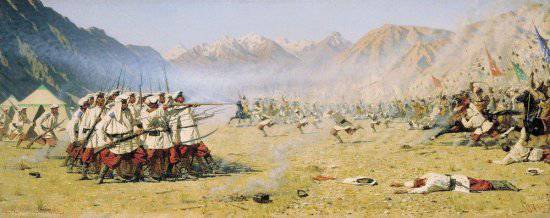
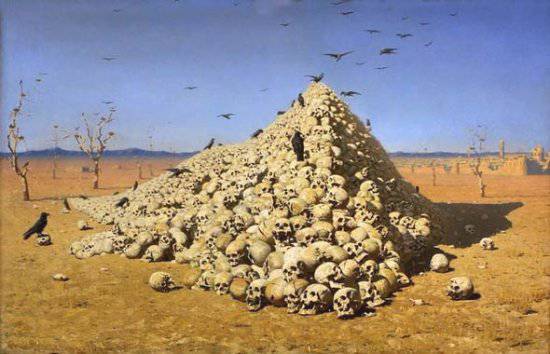
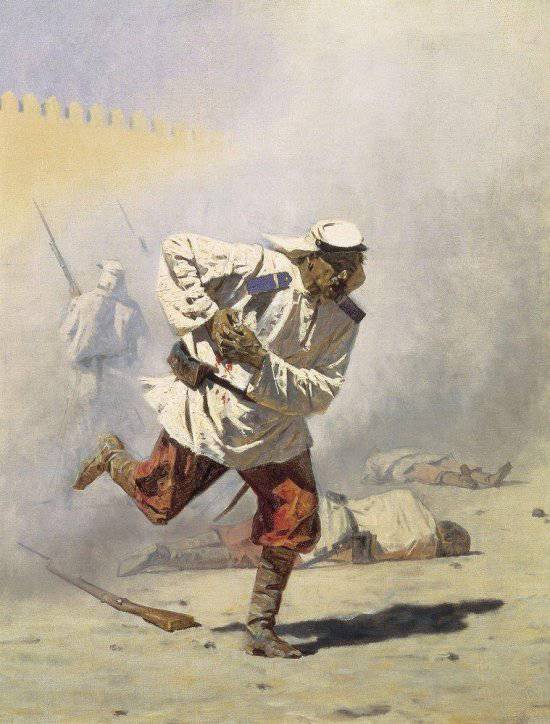
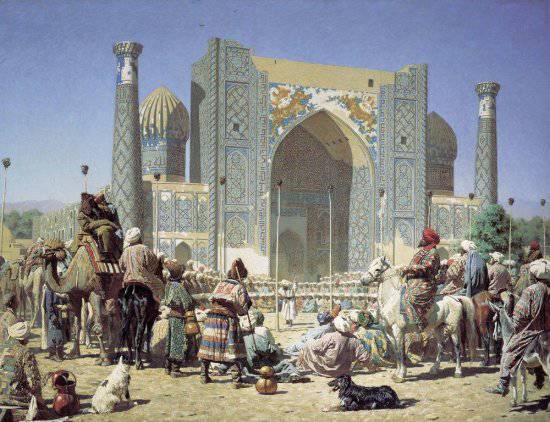
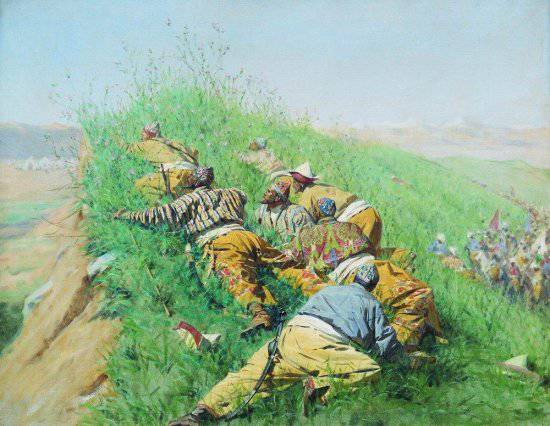
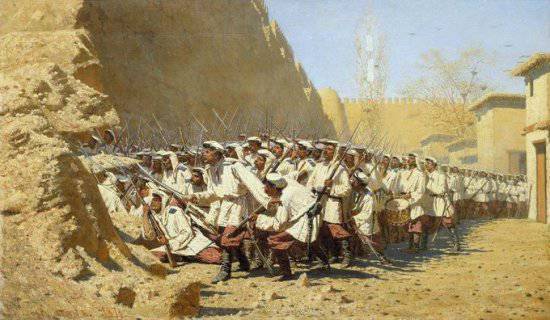
Information